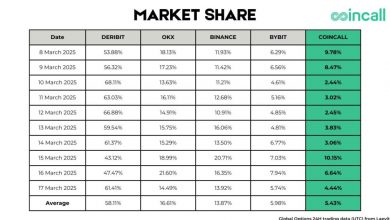Volodymyr Kozub: “You Can’t Just Throw More Servers at the Problem—High-Load Systems Require Smart Architecture.”

A high-load systems expert on scaling architectures, optimizing AI-driven infrastructures and ensuring real-time performance under extreme traffic.
In today’s digital world, service outages caused by extreme traffic surges are becoming increasingly common. As millions of users interact with online platforms simultaneously, even the most advanced systems can struggle under the load, leading to slowdowns, failures, or complete downtime.
This was evident in February 2025, when Slack experienced a major disruption lasting nearly ten hours. A latent defect in its caching system collided with a routine maintenance update, causing widespread feature failures and leaving users unable to access key functionality.
Ensuring that systems remain stable under such extreme conditions is exactly what experts like Volodymyr Kozub specialize in. With over 15 years of experience in high-load system development, he has worked with major U.S. and European companies, designing scalable, fault-tolerant systems capable of handling millions of requests without failure. He is also the author of Best Practices for Developing High-Load Systems book and has published multiple scientific papers on the topic.
Currently, Volodymyr is applying his expertise at the renowned global consulting firm Korn Ferry, where he focuses on AI-powered high-load systems for voice, text, image, and video recognition—domains where real-time performance and infrastructure optimization are mission-critical. In this interview, we’ll explore what it takes to build high-load systems, how AI shapes their scalability, and where the industry is headed.
Volodymyr, the term high-load systems is often used, but different people define it differently. Based on your 15-year experience, how would you describe high-load systems, and what makes them different from regular software?
A high-load system is any system that needs to handle many concurrent requests, process large amounts of data, and do it all with minimal latency and downtime. It’s not just about how many users you have but how efficiently your system can scale under pressure without crashing or slowing down.
High-load systems are different from regular ones because you can’t just throw more servers at the problem—you need a solid architecture. Things like distributed computing, caching, database optimizations, and load balancing all ensure the system stays fast and reliable.
You have worked on high-load infrastructures across different sectors—from gaming and e-commerce to food delivery and AI-powered systems. In your experience, which industries rely the most on high-load systems, and what are their biggest challenges?
High-load systems are essential in industries requiring large-scale data processing and real-time interactions. They play a critical role in telecommunications, healthcare, streaming services, online education, and smart cities.
Telecom networks handle millions of concurrent calls and data exchanges, while healthcare systems process real-time medical records and telemedicine data. Streaming platforms must deliver seamless content to millions of users, and online education services rely on stable infrastructure for live classes and digital coursework. Smart city solutions, from traffic control to public utilities, depend on real-time data processing for efficiency.
I’ve personally dealt with these challenges in e-commerce and food delivery, where high-load systems must process thousands of transactions per day while ensuring speed and reliability at Dev.Pro, I worked on integrating two major online ordering platforms, providing seamless Point-of-Sale operations. In Moon Active, I built the backend for Travel Town, a popular merge game.
Travel Town, developed by Moon Active, a globally respected mobile gaming company known for the massive, sustained success of its titles, became a breakout hit — attracting over 1 million daily active users and generating millions in revenue. As the senior software engineer, what were the biggest technical challenges you faced in scaling the game?
The biggest challenge is maintaining system stability while handling massive traffic loads. When a game gains popularity, you’re not just dealing with more users—you’re also facing sudden spikes in activity, unpredictable loads, and growing data complexity.
For instance, during in-game events or promotions, the number of active players can double or even triple quickly. Such spikes could cause delays, crashes, or even system failures without the exemplary backend architecture. Ensuring a seamless experience at this scale requires continuous optimization of data processing, efficient load balancing, and real-time monitoring.
Another challenge is database performance. The more players interact with the game, the more data is stored and retrieved. If queries are inefficient, response times slow down, leading to lag or freezing. This is especially critical in a real-time game environment, where even milliseconds matter.
One of the solutions you implemented—building the backend from scratch using a microservices architecture and Domain-Driven Design—is considered a forward-thinking approach in the gaming industry. What made you choose this structure, and how did it help ensure Travel Town remained scalable and reliable under massive user loads?
From the start, we focused on a microservices architecture, designing the backend from scratch using Domain-Driven Design (DDD). Unlike monolithic systems—where a single bottleneck can affect the entire application—we structured each game feature as an independent service. This modular approach allowed each component to scale individually, ensuring that heavy traffic in one area wouldn’t slow down the rest of the game.
For real-time client-server communication, we implemented WebSocket, which enabled fast, low-latency interactions without the overhead of repeated requests. Internally, we used both HTTP and AWS message queues for inter-service communication—allowing asynchronous data flow and system resilience even under extreme load.
We also switched from Express.js to Fastify.js, a framework with higher request-per-second (RPS) performance, which significantly reduced server response times.
As your backend optimizations significantly reduced response times, what specific improvements had the biggest impact?
One of the most effective optimizations was using Redis as an in-memory cache, reducing the need for constant database queries and improving data retrieval speed.
Also, we implemented LUA scripts to further improve Redis efficiency, allowing multiple database commands to execute as a single atomic operation. This cut down database interactions, making the system faster and more efficient.
On the infrastructure side, we introduced real-time monitoring and predictive scaling. This allowed us to detect bottlenecks before they affected users and automatically allocate more resources when traffic spiked. These optimizations ensured Travel Town could handle millions of players without performance issues.
While working at Dev.Pro, a respected software development company with over 12 years of experience delivering high-load solutions, you successfully led the integration of two large online food ordering platforms, improving application stability by 15% while processing thousands of transactions per day. What were the biggest challenges, and how did you solve them?
The biggest challenge was making sure the two platforms could communicate seamlessly without errors. Since they were initially built as separate systems, merging them risked serious issues like duplicate orders, lost transactions, or slow performance, all of which could disrupt operations and frustrate customers. To prevent this, we created a middleware layer that acted as a bridge between the platforms, ensuring they could exchange data in real-time without conflicts. Instead of traditional approaches that involve deploying a middleware layer on separate instances or in a Kubernetes cluster, we implemented AWS Serverless. This solution enables automatic scaling at the cloud infrastructure level, allowing us to process orders efficiently without the risk of overload and with high processing speed. On top of that, we optimized the database operations, which significantly reduced response times and improved overall stability. As a result, the two platforms were able to work together smoothly, processing thousands of transactions daily without delays or errors while also keeping costs low and efficiency high.
As a specialist in advanced architectural decisions and system optimizations, you’ve described many of your core principles in your book Best Practices for Developing High-Load Systems, which has become a valuable resource in the industry. What inspired you to write it, and how do you apply its concepts in your current work?
When I started working on high-load infrastructures, I noticed a gap—there wasn’t a practical, experience-based guide that addressed the real-world challenges engineers face when systems scale rapidly. That’s what motivated me to write the book: to share architectural best practices and solutions that I’ve applied in diverse industries.
Many of those principles remain central to my current work—from optimizing database queries and eliminating blocking operations to designing scalable architectures for AI-powered systems. The goal is always the same: to build systems that are not only robust under load but also efficient, resilient, and ready for future growth.
High-load systems continue to evolve, especially with AI-driven automation and cloud-native architectures. From your expert point of view, what trends will shape the future of high-load systems, and how will they impact industries relying on them?
The biggest shift we’re seeing is the combination of AI, automation, and cloud scalability to make high-load systems more autonomous and self-optimizing. AI plays a major role in predictive scaling, where systems automatically adjust resources before traffic spikes occur. This is crucial for industries like finance, e-commerce, and gaming, where user activity can be highly unpredictable.
Another trend is serverless and edge computing, which allow businesses to scale dynamically without managing infrastructure. Instead of relying on massive centralized servers, computations are happening closer to users, reducing latency and improving efficiency.
Finally, security is becoming a more significant concern as high-load systems handle increasingly sensitive data. AI-driven threat detection makes systems more resilient against cyberattacks by identifying anomalies in real-time. As demand for high-performance systems grows, companies that fail to adopt scalable, AI-optimized architectures risk falling behind.





